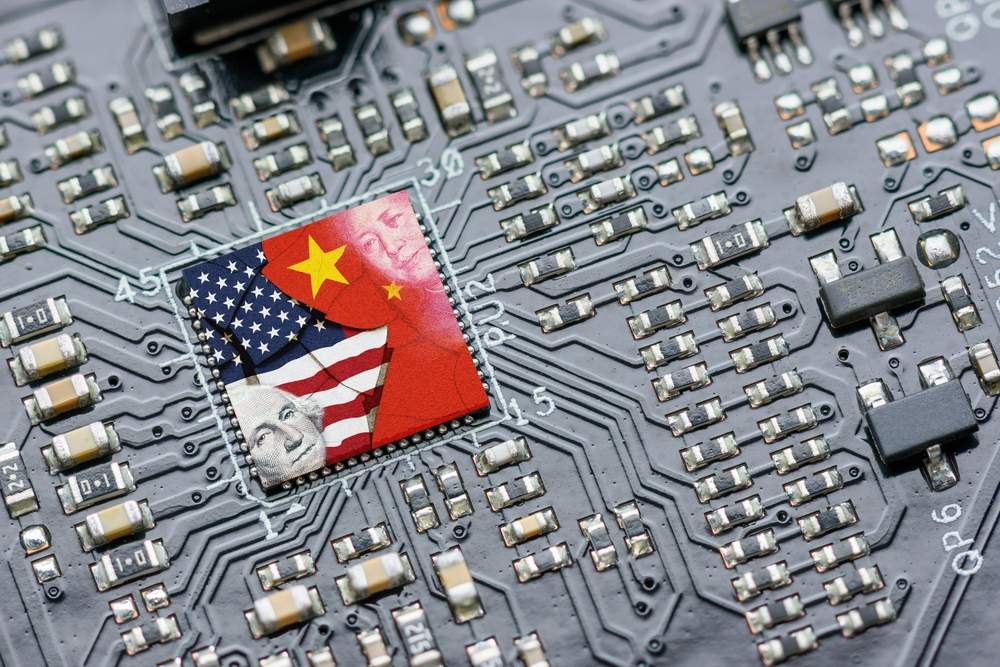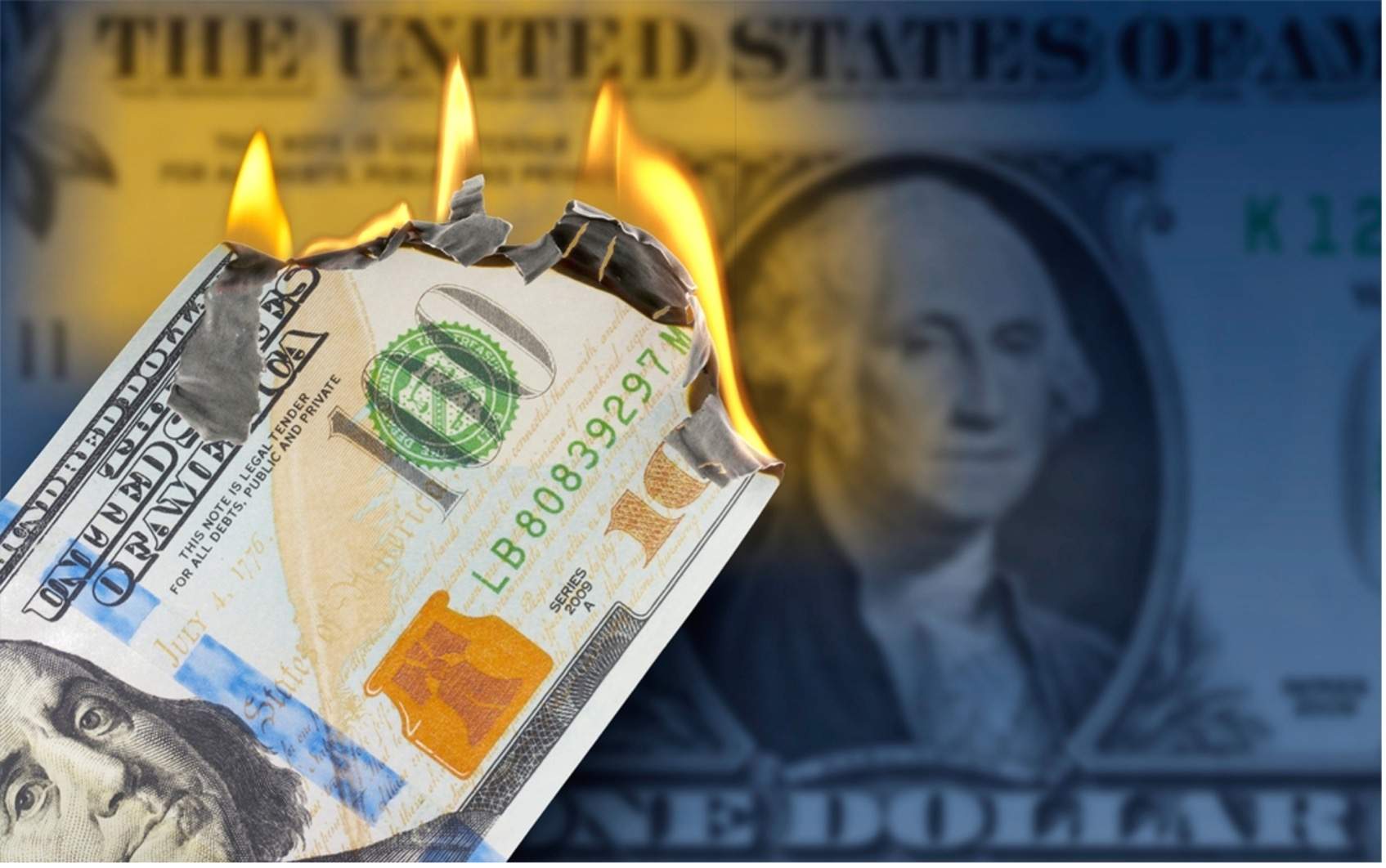A year after Russia invaded Ukraine, China has offered up a plan for peace. At least, that’s what China calls it.
The plan has almost no chance of resolving the conflict. But it does effectively lay out China’s path to invading Taiwan … and potentially igniting World War III.
A few things to consider before you think I’m playing armchair general.
I’m a veteran lieutenant colonel of the U.S. Air Force. I’ve worked in the Pentagon. I’ve coded missile paths for the U.S. nuclear arsenal. And I did all this during the Cold War.
War is not something I take lightly. It’s not something I want or encourage.
But China’s interests in Taiwan, as Ian King noted Tuesday, are beyond our control. China will very likely make a move in the not-so-far future to secure those interests.
As investors, we must take a sober look at the potential path ahead and how it will impact us.
Today, we’ll do just that.
We’ll pick apart China’s peace proposal for Ukraine. I’ll share some telling thoughts from current military personnel. And I’ll give you my assessment for how a war with China could break out, down to the weapons each side will most likely use and which companies make them.
Most importantly, though, I’ll show you which moves you should consider taking right now in order to protect yourself, your family and your wealth for the potentially turbulent years to come.
The Doublespeak of China’s “Peace Plan”
China’s peace plan says the sovereignty of all countries should be upheld.
Sounds nice. Almost banal. Hard to argue with.
That’s the point. China isn’t really talking about Ukraine here. It’s talking about Taiwan.
In China’s view, Taiwan is part of its sovereign territory. It’s held this belief for 80 years, despite having no direct control of the island.
In 1975, Mao told then-Secretary of State Henry Kissinger that Taiwan was a small problem they could wait 100 years to solve. At the time, he believed it was better for the U.S. to keep the “unwantable, indigestible” island under control. After addressing China’s more urgent needs, the small problem of Taiwan would still be there to revisit.
Today, many of those needs have been met. The country is the world’s second-largest economy. Life expectancy increased from about 60 in 1975 to 78 now.
Taiwan is also a very different country now than it was 50 years ago. It’s gone from being “full of counter-revolutionaries,” as Mao put it in 1975, to a modern tech powerhouse producing 92% of the world’s computer chips.
If the world community accepted China’s “peace plan” and abided by its desire for all countries to respect each other’s sovereignty, China would seem justified in quickly absorbing Taiwan into its political structure.
Another innocent-sounding passage from the peace plan says: “The security of a region should not be achieved by strengthening or expanding military blocs.” This comes with a demand that the world change its “Cold War mentality.”
For Ukraine, this implies NATO should stop defending Ukraine. But for China, it means the U.S. alliances with South Korea and Japan should be weakened. Decreasing U.S. presence in Asia would make a war for Taiwan easier for China.
China’s motives and intentions have been clear for a long time. What hasn’t been clear, until today, is how and when it could initiate this conflict.
Statements from current military officials give us a good idea…
Preparing for a 2025 Conflict
On February 1, Air Force General Mike Minihan wrote in an internal memo: “My gut tells me we will fight in 2025.”
Taiwan’s presidential elections are in 2024 and will offer [Chinese President] Xi a reason. The United States’ presidential elections are in 2024 and will offer Xi a distracted America.
Xi’s team, reason, and opportunity are all aligned for 2025.
No matter when China strikes, I expect the initial clash between China and the U.S. to be at sea, between U.S. aircraft carriers and China’s anti-aircraft weapons.
That includes China’s DF-26 missile, aka the “carrier-killer.” The missile has a range of at least 2,500 miles. It uses satellites for targeting. Its launchers are mobile. That makes it likely the DF-26 will be used in a war.
But big missiles generate a lot of heat when they’re launched. Because of the heat, the U.S. will know when it’s launched. Satellites spot launches immediately, no matter where the launch occurs. The trajectory will be calculated in seconds and updated continuously.
On the ship, the crew will know they’re under attack. They’ll immediately ready weapons like the SM-6 — a missile capable of intercepting aircraft and missiles as they near the ship.
The carrier may also use electronic warfare systems. These disrupt the targeting system of incoming missiles. Surface Electronic Warfare Improvement Program (SEWIP) systems offer this capability.
These are just some of the tools at our disposal and the most likely to be used.
Why is this important to understand?
Because it’s the first step to figuring out how we can protect our wealth in what could become the biggest conflict of the 21st century.
2 Defense Stocks That Help Protect America
A battle between China’s missiles and U.S. defenses is irrational. But war is always irrational. And we need to be prepared for the irrational.
The Department of Defense (DoD) is always ready for war. General Minihan’s words were widely criticized, but to me, they show senior leaders view China as a potential adversary and are preparing for that reality. This should be reassuring to us as U.S. citizens.
The best defense against war is a strong offensive capability. As the DoD buys new weapons and upgrades existing systems, billions will flow to defense contractors.
As investors, we need to consider opportunities in this space.
One way to invest is to buy companies like Raytheon (NYSE: RTN) which makes the SM-6, or Northrop Grumman (NYSE: NOC) which manages the SEWIP.
But the defense sector isn’t the only trade on this idea.
Remember that Taiwan currently produces 92% of the world’s semiconductors.
Semiconductors are the spark plug of the world. Without them, every computer stops working. Every modern vehicle freezes. Houses are just big boxes with no appliances or HVAC systems.
That’s just at home. Modern military hardware is also utterly dependent on semiconductors.
The global $80+ trillion GDP is inextricably linked to the state of semiconductors. A conflict over Taiwan would slam the brakes on much if not all of this.
That is unless there’s a backup plan.
U.S. manufacturers are looking at reducing their reliance on a potential adversary like China. This will boost the stocks of many companies in the U.S. as chipmaking becomes a national imperative.
My friend Ian King has been researching these developments and has other ideas on this trade.
He found that semiconductors have been the root of some of the biggest wins ever — 32 stocks went up 1,000% or more in less than five years.
As I noted, the defense of our country and lives of our service members depend on semiconductors.
While Ian has a list of the 32 stocks that went up more than 1,000% in less than five years, he also has insight into which one could be the next 1,000% gain. You can learn about his top pick in this presentation.
Regards, Michael CarrEditor, One Trade
Michael CarrEditor, One Trade
P.S. I’ll be watching the China situation closely in the months and years to come. I believe it has the potential to become the #1 investment theme of the 2020s.
In the meantime, what are your thoughts about China’s place on the world stage? Do you believe they will invade Taiwan? What are you doing right now to prepare?
Write me at BanyanEdge@BanyanHill.com and let me know.
If You Think Inflation Is Bad Now…
I really hope Mike is wrong about war with China. I was hoping to make it to a ripe old age without seeing the onset of World War III.
But as Mike says, we must be prepared for even the most irrational outcomes.
Let’s say some kind of conflict breaks out between the U.S. and China. Even a small, limited war would be a disaster.
If you think the COVID-era supply chain disruptions were rough, imagine how bad it would get in an open conflict situation. How many shipments from Chinese factories would be arriving in Los Angeles ports if our two navies were shooting at each other? Yeah, not many.
We got a sample of what deglobalization looked like during the supply chain crisis. But while that mess has mostly been cleaned up, this longer-term theme of “firing China,” in Ian’s words, is really just getting started.
That means inflation — and its ugly stepsister stagflation — are going to be a thorn in our sides for the foreseeable future. And it’s showing in the data.
It seems that the spike in Personal Consumption Expenditures inflation last month took the Federal Reserve by surprise. Fed Chair Jerome Powell had spent most of 2023 with a decidedly dovish tone, leading investors to draw the conclusion that we were nearing the end of the Fed’s tightening cycle.
Well … that’s not the message we’re getting today.
On Wednesday, Minneapolis Fed President Neel Kashkari raised a few eyebrows by suggesting he was “open-minded” over whether the Fed should raise rates by 0.25% or 0.5% in their next meeting later this month. And more to the point, he said: “We’re not making progress as fast as we’d like” in bringing down inflation.
Atlanta Fed President Raphael Bostic agreed, saying: “We need to raise the federal funds rate to between 5% to 5.25% and leave it there well into 2024.”
Now, ultimately, it’s not going to matter all that much if the Fed raises rates by 0.25% or 0.5% at their next meeting. It’s a difference of one-quarter of one percent, for crying out loud.
But the change in tone is telling. The Fed seems legitimately worried that it doesn’t have control over inflation. The job market is still too hot, and Americans are still swiping their credit cards a little too aggressively.
We’ve been saying this in The Banyan Edge for months, of course. Setting the price of credit is the only move the Fed can make. It’s nowhere near the only factor driving inflation.
That news isn’t all bad though. A little Fed-induced market volatility should give us some nice entry points in precisely the kinds of growth opportunities Ian looks for.
We can’t count on this bear market being over just yet. But what we can count on is smart investments today paying out in the years ahead.
U.S. semiconductor companies are looking like one of those smart investments. Ian King — an expert on them — talks about how he finds the best ones right here.
Regards, Charles SizemoreChief Editor, The Banyan Edge
Charles SizemoreChief Editor, The Banyan Edge






